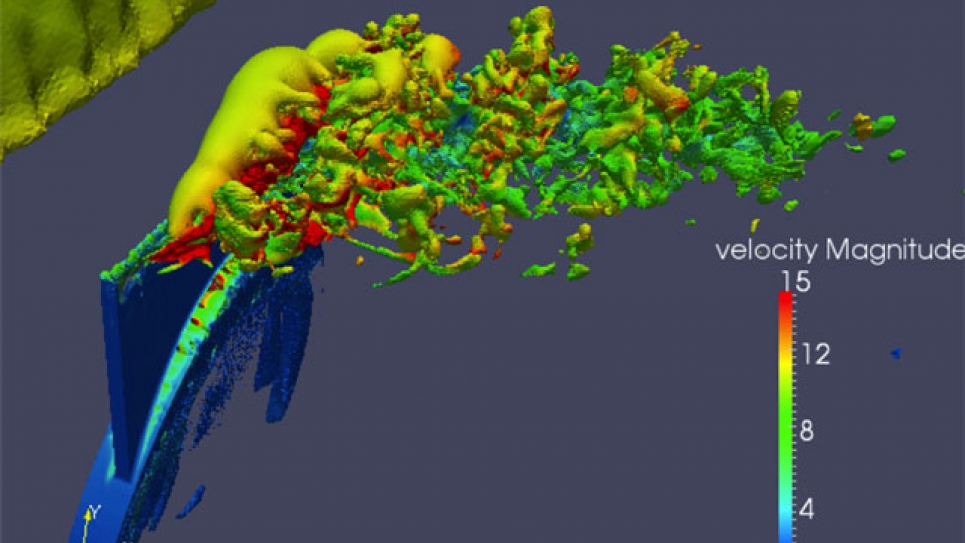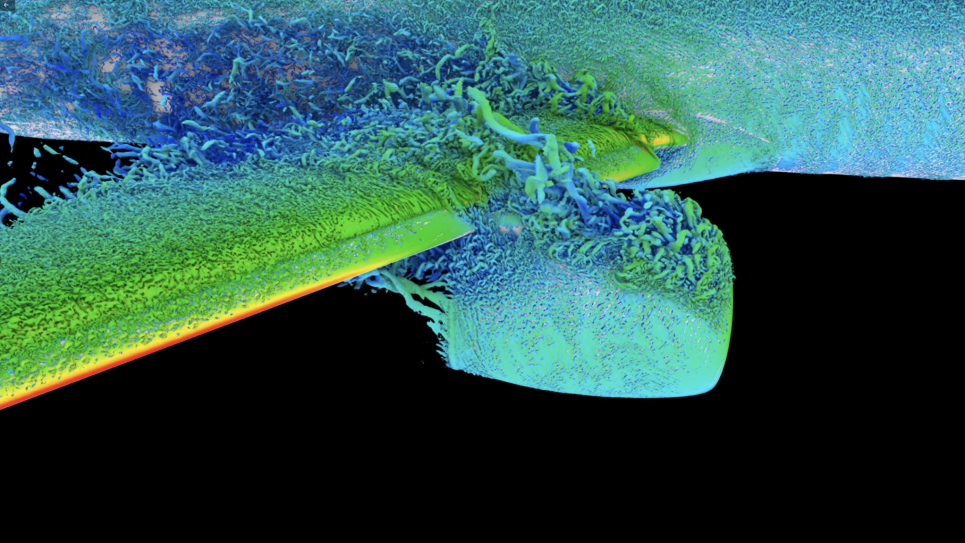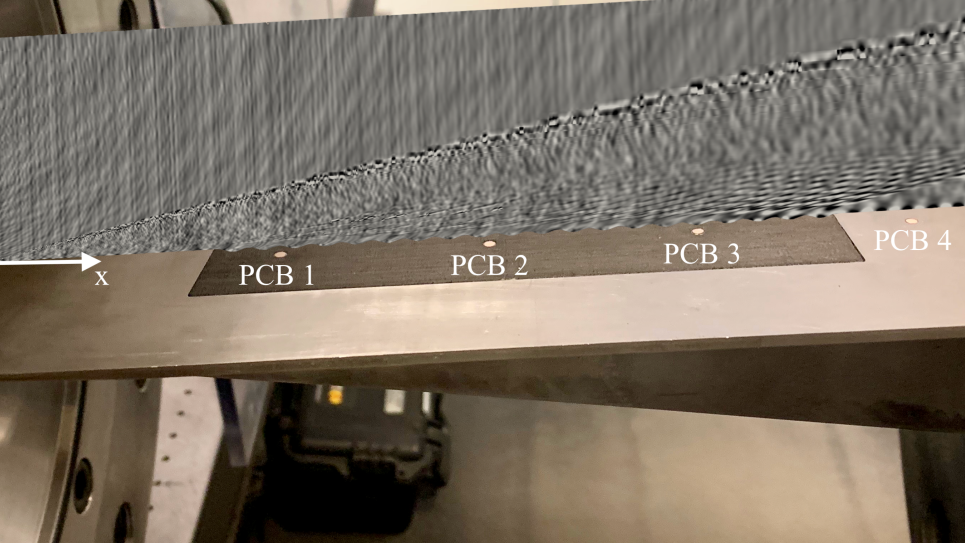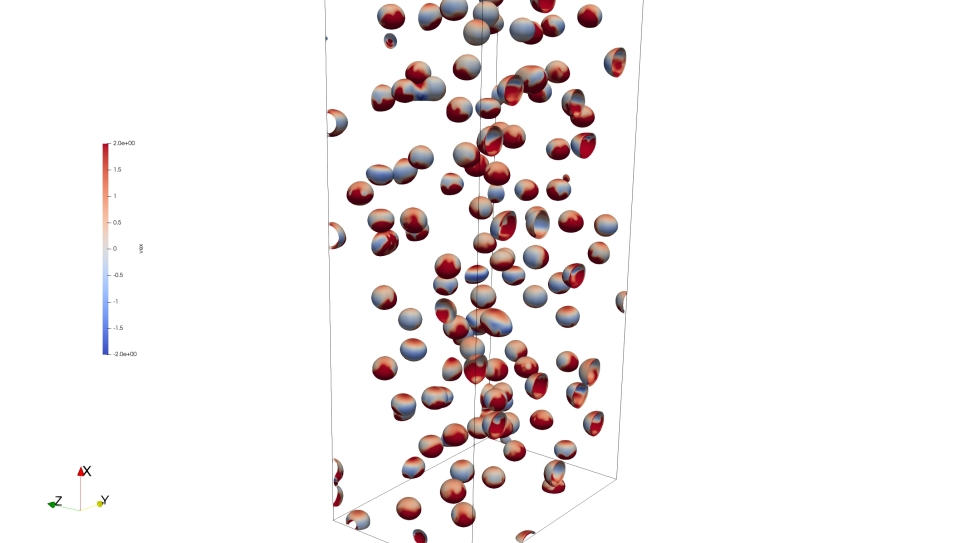
Adaptive Detached Eddy Simulation of a Vertical Tail with Active Flow Control
Project Description
The use of fuel—and its accompanying costs—has become an increasing concern in many industries. Researchers are examining the issue of fuel reduction in commercial jet aircraft from the perspective of redesign. By redesigning the vertical tail of a commercial jet, they hope to reduce jet fuel use by 0.5%, resulting in annual savings of $300 million.
Using ―synthetic commercial jet aircraft, the team will perform a series of simulations of active flow control on the vertical tail of the aircraft. The team will model an array of jets that have been vectored to augment the streamwise momentum near the rudder suction peak, where separation is typically observed to limit rudder effectiveness. The simulations are carefully coordinated with an experimental effort funded under the same project.
As the experiments are at a much lower Reynolds number than those encountered in flight, the first set of detached eddy simulations (DES) are designed to be validated against the coordinated experiments, matching all details, including the complicated jet cavity paths. As it will not be possible to carry out this level of simulation at flight Reynolds numbers, this project will also validate a multiscale modeling effort that has been developed for this purpose. Simulations at each Reynolds number will be analyzed for insight into improving Reynolds averaged Navier-Stokes (RANS) modeling for this class of problems.
Currently, the vertical tail in jet aircraft is sized to handle an ―engine-out‖ condition, which requires it to be much larger than what is needed for all other conditions. Researchers hypothesize that if flow control can achieve the same side force with a 25% smaller vertical tail, jet-fuel reduction will result.
Domains
Allocations


